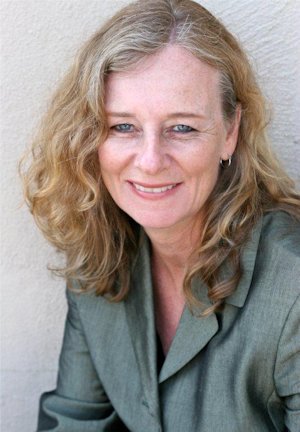‘Buddy Holly’ and the Crickets –Oh Boy
“All my love, all my kisses, you don’t know what you’ve been ‘missin, oh boy…”

Buddy: The Buddy Holly Story is a co-production by Intrepid Theatre Co. and New Village Arts.
It’s a true story about a creative spark cut short during turbulent times, and we can’t help but sing and clap along to Buddy: The Buddy Holly Story, on view at the Horton Grand Theatre downtown, and later this summer at New Village Arts in Carlsbad.
Let’s scroll back. Way back. Before the Beatles and the Stones. It’s 1956, and Eisenhower is re-elected President. Martin Luther King emerges as leader of desegregation. Meanwhile, a quirky 19-year-old with a stubborn streak begs for radio airtime, in Lubbock, Texas.
In jukebox and radio style, we follow the rise and short career of a dorky and rebellious guy who becomes a rock and roll legend.
We endure the recording process and radio jingles. Buddy refuses to play country music. His mother calls to remind him to eat.
When someone suggests he not wear glasses, he says he needs bigger glasses.
Oblivious to social norms of the time, he marries a Latina he’s known for a day.
Wearing those signature black-rimmed glasses, Paul Swensen Eddy conjures the ghost of Buddy Holly in songs that topped the charts, like “That’ll Be the Day,” and “Maybe Baby.” He cranks on his Fender Strocaster guitar (note to self: his Strat was stolen twice in 1958, the year I was born) and he hits all the notes. To make it extra real, he argues with his mentors and band mates.
Conversation about changing the title of his song “Cindy Lou” to “Peggy Sue”–so his drummer can get lucky with a girlfriend–is awkward. He may have written the songs, but in this production, Buddy is strongest with his band, the Crickets.
The Crickets—portrayed full out by Marc Akiyama on drums and Noah Zuniga-Williams on standup bass–steal several scenes with true musical ability and youthful horseplay, especially Williams who has great fun balancing on his off-kilter bass.
The heartthrob bass player delivers one of the best lines when they arrive at the Apollo Theater in Harlem. “We’re gonna die.” Oh snap, the Crickets were booked by someone who thinks they’re black.
Without hesitation, Holly dives into his bouncy songs and finds common ground.
Director Christy Yael-Cox gets traction by squeezing Holly, the Crickets, and new Harlem friends together on a small stage; it’s a winning show within a show structure where viewers experience that awakening.
Musical thrills include the call-response gem “Shout” by the Isley Brothers, led by a strutting Benjamin Roy and exuberant Eboni Juse. (Musical theater fans will recognize Roy from Ragtime presented by San Diego Musical Theater).
Buddy Holly was a pivotal figure in the 1950s. Snippets of songs tie the era together, but costumes don’t always ring true. The men look authentic in stiff jeans and gaudy suits, but the women need glam. Back in the day, women wore black at funerals, and nuns wore black tights, but the Apollo scene screams out for elegance. Before the production moves north, let the women slip into vintage gowns—in shades of pink and turquoise.
This co-produced jukebox musical is a toe tapper high on music and a tad low on acting, but then again, we already know the story. Zackary Scot Wolfe is a knock-out in multiple roles, especially as the bubbly Clear Lake Emcee. Mature audiences will connect with characters like J. P. Richardson, aka the Big Bopper, and Ritchie Valens, portrayed here by Manny Fernandes and Shaun Tuazon.
The downtown audiences love Fernandes in a silly “Chantilly Lace.” Tuazon swivels his hips till it hurts in “La Bamba.” Holly, Richardson—The Big Bopper, and Valens, are there in freezing cold Iowa for their final concert.
Some may remember it as “the day the music died,” a lyric from Don McLean’s “American Pie.” They didn’t want to ride the bus to Fargo and were killed, along with their pilot. There is a quiet pause for reflecting on the crash of Feb. 3, 1959. Holly was 22. Richardson was 28. Valens was 17.
But life goes on, and they all jump into “Johnny B. Goode” and an encore of “Oh Boy” because music never really dies.
intrepidtheatre.org. Newvillagearts.org

Kris Eitland covers dance and theater for Sandiegostory.com and freelances for other publications, including the Union Tribune and Dance Teacher Magazine. She grew up performing many dance styles and continued intensive modern dance and choreography at the Univ. of Minnesota, Duluth, and San Diego State Univ. She also holds a journalism degree from SDSU. Her career includes stints in commercial and public radio news production.
Eitland has won numerous Excellence in Journalism awards for criticism and reporting from the San Diego Press Club. She has served on the Press Club board since 2011 and is a past president. She is a co-founder of Sandiegostory.com. She has a passion for the arts, throwing parties with dancing and singing, and cruising the Pacific in her family’s vintage trawler. She trains dogs, skis, and loves seasonal trips to her home state of Minnesota.
